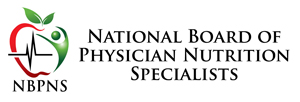Case 2
Part 1
BR is an 11 mo old, ex-32 wk premature infant w/ severe growth problems.
Diet/feeding history:
- BF x 5 wk, then Enfamil w/ Iron
- Initially formula diluted, full strength by 8 wks (term)
- Solids introduced at 7 mo (5 mo corrected)
- Tried various formulas but oral intake never great, some intolerance w/ diarrhea
- Gastrostomy feeding tube placed at ~ 9 mo of age (7 mo corrected); feeds of commercial formula w/ daytime boluses + nighttime drip
Question 1: What other questions would you have about her diet?
- What prompted the change from breastfeeding to formula feeding?
- Describe BR’s tolerance to breastfeeding and to formula feedings. What formulas were tried?
- How were they prepared? Did BR give cues for feeding or demand feed? What was the longest amount of time between feedings?
- What was the most volume the infant would take by mouth per feed? How long do feedings take?
- Describe the diarrhea that occurred with some of the formulas. Describe BR’s response to solid foods. What foods were tried?
- How much solid food was consumed per feed?
- Describe the current gastrostomy feeds including volumes and schedule. Does BR take anything by mouth now?
- If yes, how much, how often, and what types? How is BR tolerating current feeds? What are your concerns about current feeds?
- What are your goals for feeding your child?
Past Medical History:
Birth/neonatal hx:
- BW = 1562 g (appropriate for gestational age)
- Intubated x 3 days; discharged home on O2 at ~ 1 mo
- Readmitted at 5 wk for apnea
Multiple problems w/ feeding and growing over next several months
Immunizations : up-to-date
Development :
- rolled at 6 mo (4 mo); now not doing;
- concern whether possibly losing milestones;
- fine motor slightly delayed
Medications/Supplements :
- Reglan
- Multivitamin drops w/ iron + iron
Social Hx : mom home full time; dad works outside home; both college graduates; no siblings; no tobacco
ROS: negative except hx at 4 mo of “anemia of prematurity”
Question 2: Other questions? What are the risk factors for malnutrition?
- Other questions: How long has BR been on Reglan? What is the dose and regimen? Does it seem to help? How long has BR been on MVI and extra iron? When did AR last have blood drawn to check for anemia?
- What is BR’s sleeping pattern? Does BR receive any over the counter medications, herbal, or other dietary supplements?
- Risk factors for malnutrition: Prematurity, multiple formula changes with reports of intolerance, inadequate oral intake, gastrostomy tube placed with ? adequate intake, developmental delays.
Anthropometry
Weight: 3.53 kg (_____%)
Length: 60.6 cm (_____%)
Head circumference: 40.5 (______%)
Weight-for-Length: ______%
Question 3: What is your assessment of growth: wasted, stunted? What degree of severity (% Ideal body weight?)
- Wt/age: << 5 th %
- Length/age: << 5 th %
- OFC/age: << 5 th %
- Wt/length: << 5 th %
- Length age = 3 month old
- Weight age = 2 week old
- Ideal body weight (IBW): 5.7 kg, % Ideal = 62%
- Growth is both wasted and stunted. Malnutrition is severe with patient at 62% ideal weight.
Physical Exam
General : Emaciated, hypotonic, lethargic infant lying in mother’s arms; + eye contact but no smile
Skin : no rash
HEENT : unremarkable
Lungs & Cardiovascular exams: unremarkable
Abdomen : soft, non-tender, no hepato-splenomegaly
Extremities : no edema; extremely decreased subcutaneous fat; + muscle wasting; no edema
Neuro : decreased tone, weak, poor head control
Laboratory Values
(Prior to referral, patient had undergone extensive lab testing:
- Normal chemistries; normal metabolic studies (r/o inborn errors); thyroid function; liver biopsy; carnitine; Sweat chloride (r/o cystic fibrosis); Echocardiogram, et al….
On admission, screening labs:
- Electrolytes & glucose normal; Normal except slightly low hemoblobin & hematocrit (10 & 31); normal liver function; total protein & albumin = 6.2 & 4.2 (normal); Ca, P nl;
Question 4: What is your diagnosis? What would be the treatment approach?
- Diagnosis is severe protein calorie malnutrition of the marasmus type, most likely related to inadequate intake. Developmental delays and hypotonia are concerning, but may be related to the degree of malnutrition vs. an underlying yet to be identified disease process.
- Treatment: Medical nutrition therapy needs to be instituted with great caution. She is at high risk for refeeding syndrome, and initially should be provided with only maintenance calories via gastrostomy tube. Laboratory monitoring should include daily chemistry panel including K, PO4, and Mg. Patient should have daily weights. If “refeeding” labs are stable on maintenance feeds, gradually increase amount given daily toward minimum goal of 120 – 150 kcal/kg IBW. Monitor closely for signs of intolerance, but feeds should not be held for loose stools or small amounts of emesis. If diarrhea becomes a concern, consider checking stool for fat. Because of degree of malnutrition and the potential impact on the gastrointestinal tract, patient may benefit from a semi-elemental or elemental formula initially.
- A feeding therapist should be consulted (usually occupational therapy or speech language pathology), and should provide a complete oral feeding assessment. Physical therapy should be consulted because of decreased tone and developmental delays.
- Social services should also be consulted to work with the family and medical team, assess the family situation, help with coordinating discharge needs, and to provide support to the family.
